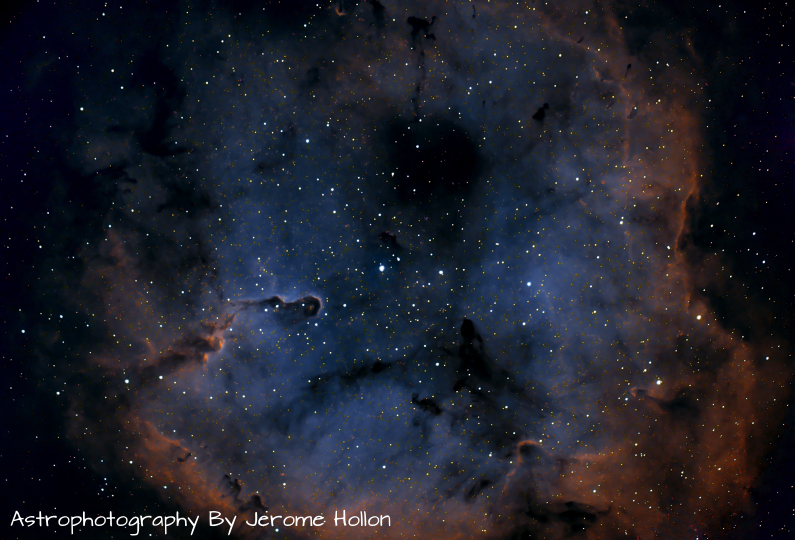Elephant's Trunk Nebula
Sep 27, 2022
Elephant's Trunk Nebula
| Other names | IC 1396, vdB 142 |
| Type | Emissions Nebula |
| Distance | 2,400 ly |
| Size | 100 ly |
| Location | Cepheus |
| Captured | Sep 27, 2022 |
| Capture type | Narrowband (SHO) |
| Total time | 4.5 hours |
| Frames | SHO 18x600' each |
| Telescope | AT80EDT |
| Camera | ZWO ASI294mm |
| Tripod | CGEM-70-EC |
Elephant’s Trunk Nebula in Cepheus
This mesmerizing image showcases Elephant’s Trunk Nebula (IC 1396), a diffuse emission nebula located in the constellation Cepheus, about 2,400 light-years away from Earth. IC 1396 is a massive and complex object, with a size of about 3 degrees across (equivalent to 10 full moons) and it is composed of a mix of gas and dust. The nebula is illuminated by the light of several young, hot stars, which are embedded in the nebula and are still in the process of forming.
IC 1396 is a particularly interesting object for astronomers because it contains one of the largest known star-forming regions in the galaxy. The region, known as the Elephant’s Trunk Nebula, is a dense pillar of gas and dust that is being sculpted by the radiation and stellar winds from nearby stars. The Elephant’s Trunk Nebula is estimated to be about 20 light-years long and it contains several young protostars.
It is referred to as the “Elephant’s Trunk Nebula” because of the distinctive trunk-like shape of the gas and dust pillar. The nebula is also home to several other interesting structures, including the “Garnet Star”, which is a bright, reddish star located at the edge of the nebula. It was discovered by the British astronomer Edward Emerson Barnard in 1893.
